
|
Navigate |
| Home |
| Kirstie Alley |
| Our 30th Anniversary |
| Never Turning Back |
| Narconon Endorsements |
| |
|
|
| |
|
|
| |
|
Facts About Drugs |
| FAQ About Ambien |
| FAQ About Ativan |
| FAQ About Cocaine |
| FAQ About Codeine |
| FAQ About Crack |
| FAQ About Darvocet |
| FAQ About Dexedrine |
| FAQ About Demerol |
| FAQ About Dilaudid |
| FAQ About Ecstasy |
| FAQ About GHB |
| FAQ About Heroin |
| FAQ About Hydrocodone |
| FAQ About Ketamine |
| FAQ About Lortab |
| FAQ About LSD |
| FAQ About Marijuana |
| FAQ About Morphine |
| FAQ About Meth |
| FAQ About Methadone |
| FAQ About Opiates |
| FAQ About Opium |
| FAQ About Oxycontin |
| FAQ About Percocet |
| FAQ About Percodan |
| FAQ About Ritalin |
| FAQ About Rohypnol |
| FAQ About Ultram |
| FAQ About Valium |
| FAQ About Vicodin |
| FAQ About Xanax |
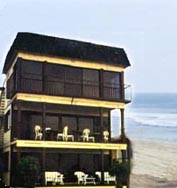 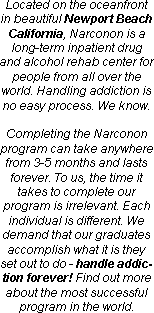 |
|
Resources |

|


 Print this article |  Send this article to a friend |  Add to Favorites |
Never
Turning Back
In all that has been said about losing the drug war, one Los Angeles group is winning it daily.
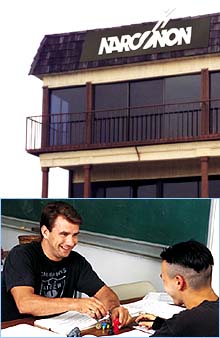
The
Narconon program in Los Angeles has fully rehabilitated hundreds of drug addicts
since opening in 1971. After withdrawal, students undertake a series of courses
to address the reasons they turned to drugs in the first place.
For 20 years, selling marijuana was the only job Gerry Marshall knew how to do. It came almost naturally to a boy who began smoking it at age 10. By age 12 he was drinking alcohol, by 18 he was using cocaine. At 21 he was part of the nightclub scene, regularly taking ecstasy and cocaine.
Gerry continued using drugs, and selling marijuana, until the time he was 30. Then a long-term relationship with his girlfriend began deteriorating rapidly, hitting bottom in late 1997 when she moved out.
“I started doing more and more drugs, trying to not feel bad about the breakup. But I finally fell apart over the whole thing — the relationship, the drugs — I was really depressed. The drugs and alcohol weren’t working anymore,” he said. “I was trying to quit them for a long, long time. I was never able to do it.”
Gerry was referred to the Narconon drug rehabilitation center as a program that could get him off drugs in all respects. “It was a hard decision to make,” Gerry recalled. “But I realized it was the only way out.”
Gerry started the Narconon program in June 1998 and graduated four months later. He has been clean and out of trouble ever since. “The program resolved a lot of issues that were making me use drugs in the first place,” he said. “There were many things I had to take responsibility for. I was able to get down to the bottom of the real problem. It was a real good experience for me personally.”
Overcoming Addiction
It was a similar, albeit ultimately more far-reaching, recovery from drug addiction that resulted in 1966 in the creation of the Narconon drug rehabilitation program, described by many as the most effective in the world. The late Willie Benitez, an addict and inmate in a state penitentiary in Arizona, found a book by author and humanitarian L. Ron Hubbard containing principles about life. Benitez corresponded extensively with Mr. Hubbard, and using principles from his books and guided by letters from the author, he overcame his addiction.
Benitez shared his experience with fellow inmates who were addicts. In a short time, Narconon — meaning literally “no drugs” — was established, using a range of Mr. Hubbard’s discoveries to address virtually all of the complexities of drug addiction. While Mr. Hubbard is well known as the founder of the Scientology religion, the Narconon program is autonomous and non-religious in nature. It has been supported from the outset by the Churches of Scientology and their members.
The Narconon program takes an average of four to six months to complete and is done in four phases including withdrawal and detoxification, communication skills to gain focus and self-control, restoration of personal ethics and values, and life skills that provide objective methods of dealing with any situation the drug-free individual may encounter.
Soon after its formation, Narconon records showed that more than 70 percent of addicts who completed the program returned to society as contributing members, and never looked back.
Likewise, Benitez and Narconon never looked back. With 106 centers in 31 countries today, Narconon has achieved international acclaim for rehabilitating close to 20,000 addicts, many hard-core, from drug and alcohol abuse.
“My Whole Life Changed”
One such Narconon center is in Newport Beach — officially known as Narconon Southern California — where Gerry Marshall overcame his drug addiction.
Formerly located on Los Angeles’s west side, the Narconon center was the first one to be opened outside of prison. In continuous operation since 1971, it is the oldest residential drug rehabilitation center of any organization in the Los Angeles area. Its 30 staff under Executive Director Larry Trahant service between 25 and 30 individuals on the program at any given time, or conduct drug education in the community. Hundreds have graduated the Narconon program at the center, including individuals from all over the United States.
Drug Education: The Long Term Answer
Like Patrick, Gerry Marshall also felt he couldn’t turn his back on the program he feels saved his life. A year after graduating from the Narconon program, he returned to Narconon Southern California and joined its staff as the Director of Drug Education.
Gerry and fellow Narconon staff Tony Bylsma trained in Boston in the successful Narconon drug education program of another Narconon graduate, Bobby Wiggins.
As a former hard-core drug addict himself, Wiggins is the leading drug education specialist in the world-wide network of Narconon centers. Reduction of drug use of as much as 70 percent has been reported in some schools as a result of his drug education lectures. In response to demand, Wiggins has trained up scores of other lecturers and recorded his own lectures on video. The drug education has reached close to 1,000,000 students, as well as adults and groups overseas, including a lecture delivered by Wiggins in Britain’s House of Lords in 1997.
Working out of Tony’s Narconon drug education office in Glendale, Gerry and Tony lecture to an average of 300 students, mostly high school, each week.
“I have huge successes from the lectures personally, removing a lot of false ideas about drugs and replacing them with facts for these kids — about how they effect the mind, how they are stored in the body, and what they really do,” Gerry said. “With facts, these kids can make better decisions about drugs, and not just accept what other kids say because they don’t know better.”
The lectures gain the rapt attention of students. “We get asked by teachers all the time, ‘How do you get these kids to listen to you?’,” Gerry said. “But kids are in mystery to some degree about drugs. You fill in the blanks, and they’re very interested. And if a kid understands something, he’s less likely to have to experiment with it to know what it is.”
Surveys filled out by students after the lectures speak for themselves.
“My thoughts about drugs really did change, in the way that he explained the drugs, how they can affect you in many ways,” wrote one student after a lecture at Huntington Park High School.
“I don’t think that ‘e’ [ecstasy] is a good idea anymore,” wrote another from Cleveland High School. “I will always have [the lecture] in the back of my mind.”
“My [thoughts about drugs] changed in a way that I’m not going to do drugs,” wrote another. “I was planning to start. I’m never going to try drugs.”
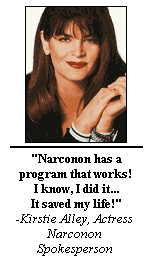
comment corner
 |
| drug rehabilitation saving taxpayers |
California taxpayers are saving more money than expected due to ... |
 |
| Study: Marijuana Causes Lung Damage |
New research finds that smoking three or four marijuana cigarettes ... |
 |
| Thanks to Online Pharmacies, Addiction Can Be Just a Click Away |
WASHINGTON -- Kelly Knable, a 34-year-old mother of three from ... |
 |
| Balancing pain and drug addiction |
Over the past two decades, two conflicting medical ideas have ... |
 |
| Clean break |
... |
 |
| State officials create prescription drug abuse task force |
TALLAHASSEE, Fla. -- State officials on Friday announced the creation ... |
 |
| Florida system often fails to catch Medicaid abuse at source |
FORT LAUDERDALE, Fla. - (KRT) - The victim's skin was ... |
 |
| Marijuana's rising threat: For more kids, use turns into addiction |
John Brown experimented with marijuana at age 10, and it ... |
 |
| Student gets state prison term for selling marijuana |
EASTON -- David Messina had his whole life ahead of ... |
 |
| Man charged in cocaine case forfeits $585,000 |
An Iowa truck driver arrested by Kentucky Vehicle Enforcement officers ... |
 |
| Cocaine Curtails Body's Ability to Cool Off |
In addition to triggering life-threatening cardiovascular episodes, cocaine can be ... |
 |
| Science for Cops |
I admit it: I'm a Law & Order fan. ... |
 |
| New Gene Therapy Could Help Quell Alcoholic Cravings |
One prevailing view of addiction holds that alcohol and other ... |
 |
| One Dose of Cocaine Primes the Brain for Addiction |
It isn't a myth: one dose of cocaine is all ... |
 |
| Marijuana Firmly Linked to Infertility |
Scientists from the University of Buffalo have smoked out what ... |
 |
| Moderate Alcohol Consumption Clouds Brain's Ability to Detect Mistakes |
It's common knowledge that a brain on booze doesn't function ... |
|
Narconon Pictures |
|
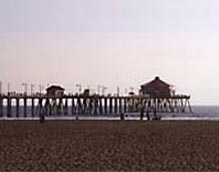 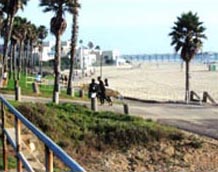 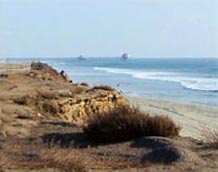 |
|